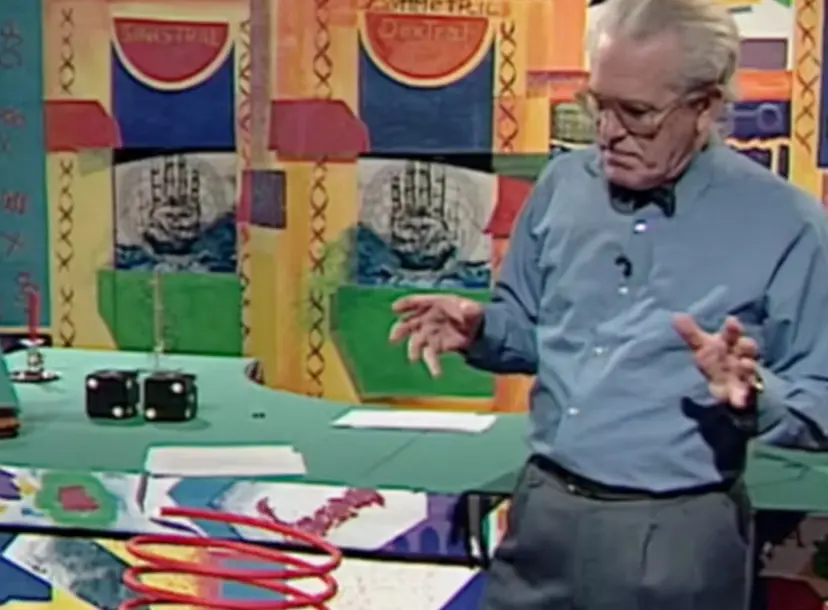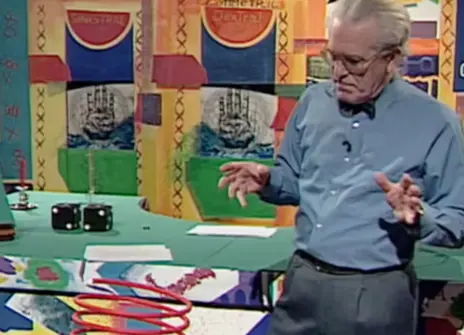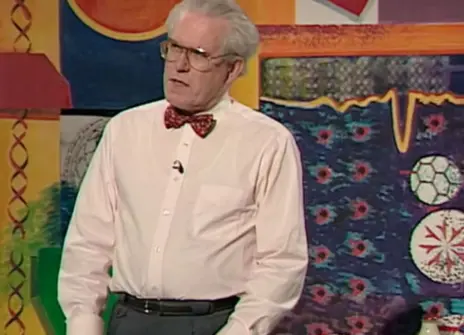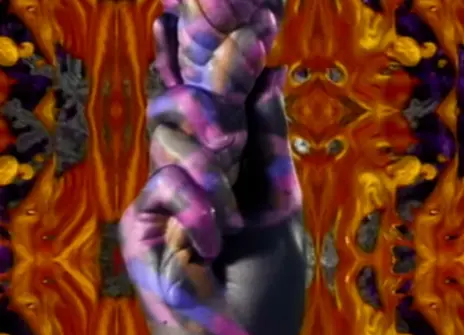Lecture 2 – Narwhals, palindromes and Chesterfield station
From the 1992 lecture brochure:
Man seems superficially symmetrical but in reality, he is profoundly asymmetric, particularly in respect of handedness. Everywhere we see this asymmetry also present in the natural world. While rats and monkeys do not show pawedness or handedness, shellfish are nearly always (when this applies) dextral, and most spiral-growing plants are sinistral. The horns of animals, the beaks of some birds and the claws of some crabs are asymmetric. While we can speculate about the origins of such chirality in nature, we realise that ultimately this is a chemical problem that we will start to come to grips within the next lecture.
We can trace the influence of asymmetric man through the artefacts he has produced and the conventions to which he has become accustomed. Clocks go clockwise but don't have to; ropes twist in either direction. We write English from left to right, but writing from right to left unites Jews and Arabs. Handedness in such matters as motor axles and gas fittings illustrates an important aspect of selectivity to which we shall return in Lecture five, and emphasises the advantages of being asymmetric.
About the 1992 CHRISTMAS LECTURES
From the 1992 lecture brochure:
We are set apart from other animals both by the use of language whose control is normally located in the left side of the brain and by the fact that unlike most other animals, which have mixed handedness, we are predominantly right-handed. Recent speculations have focused on the possibility that these two attributes are interconnected genetically, a link that could lead to an understanding of the neurobiology of language and its molecular biological basis.
In these lectures, we shall look at first our own symmetry, overall in terms of handedness and our superficial appearance, and also below the surface at our brains and other organs. Then we shall look at ourselves in the world at large, focusing on the symmetry of our fellow creatures and the artefacts that we have created. The connection of both of these to left-right relationships will be explored.
The most significant handed (chiral) objects we encounter, usually unconsciously, are the molecules that we and all of our surroundings are made of. We will look at the nature of these molecules and trace the understanding of the significance of handedness at the molecular level in the 19th century, for which it was the most far-reaching chemical realisation.
Our contact with handed molecules has profound significance in terms of, for example, sensory perceptions such as taste and smell. We can distinguish between handed molecules and this tells us that our sensory apparatus is itself handed.
Our existence depends upon the handedness of molecules both large and small and without such molecules, we would not be able to digest our food, build our bodies, or transmit our characteristics to the next generation.
We return to the opening speculation. The genes - themselves composed of handed molecules - control the development of handedness and cerebral dominance, a link that has the potential to give us an understanding of the biology of language. We leave our consideration of chirality - handedness -with an unsolved mystery. Where do chiral molecules come from?





